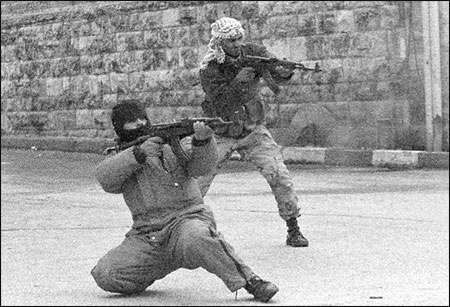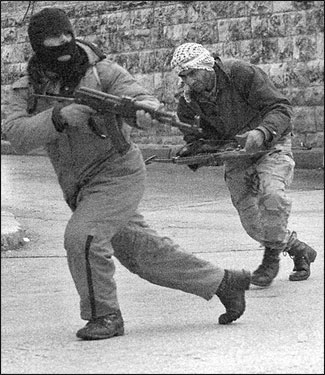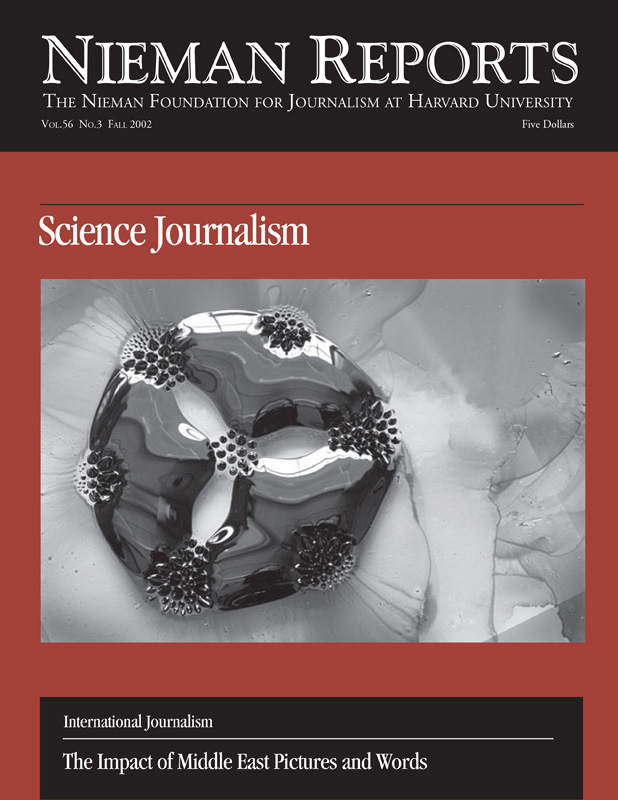
The Oregonian considered a sequence of three photos showing a Palestinian gunman being shot dead by an Israeli sniper in the West Bank city of Ramallah on Friday, March 29, 2002.

We debated using this entire sequence and further debated the context of its use on a day when Israeli troops attacked Yasser Arafat’s compound and a suicide bomber, an 18-year-old woman, killed herself and two others and injured 25 at a public market.
RELATED ARTICLE
"Arriving at Judgments in Selecting Photos"
- Randy L. RasmussenAll of these factors led us to put the second picture alone on an inside page, when on another day it might have played much more prominently. It is a haunting, unsettling image recording the moment of death from a proximity seldom seen. Its power is amplified when viewed in the context of photos taken just before and after.




